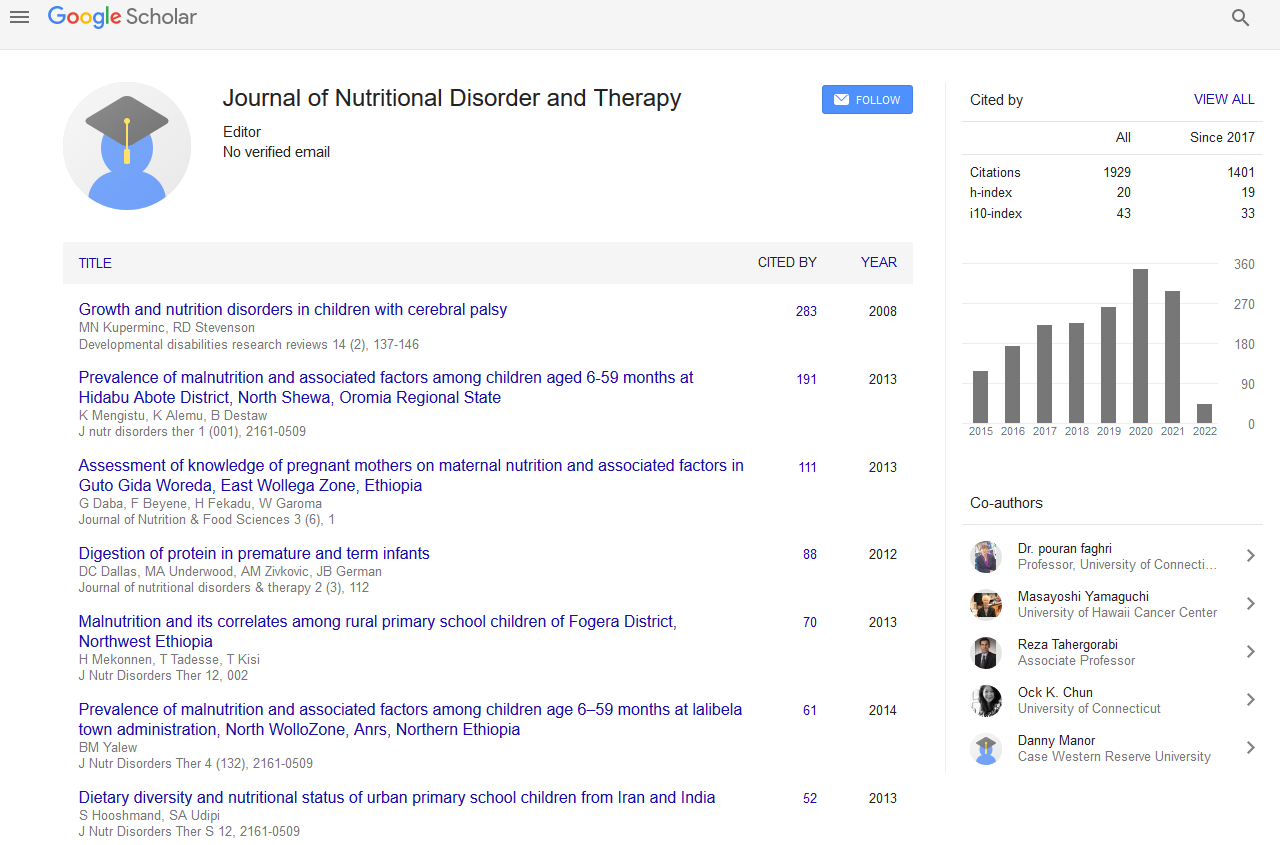Indexed In
- Open J Gate
- Genamics JournalSeek
- Academic Keys
- JournalTOCs
- Ulrich's Periodicals Directory
- RefSeek
- Hamdard University
- EBSCO A-Z
- OCLC- WorldCat
- Publons
- Geneva Foundation for Medical Education and Research
- Euro Pub
Useful Links
Share This Page
Journal Flyer

Open Access Journals
- Agri and Aquaculture
- Biochemistry
- Bioinformatics & Systems Biology
- Business & Management
- Chemistry
- Clinical Sciences
- Engineering
- Food & Nutrition
- General Science
- Genetics & Molecular Biology
- Immunology & Microbiology
- Medical Sciences
- Neuroscience & Psychology
- Nursing & Health Care
- Pharmaceutical Sciences
Antigenotoxic and anti-proliferative effects of Pistacia lentiscus
JOINT EVENT: 13th International Congress on Advances in Natural Medicines Nutraceuticals & Neurocognition & 14th International Conference on Clinical Nutrition
July 27-29, 2017 Rome, Italy
Bouguellid Ghania, Russo Chiara, Lavorgna Margharita, Piscitelli Concetta, Atmani Djebbar and Isidori Marina
Université de Bejaia, Algeria
University of Campania �??Luigi Vanvitelli�?�, Italy
Posters & Accepted Abstracts: J Nutr Disorders Ther
Abstract:
Introduction & Aim: Pistacia lentiscus (Anacardiaceae) is widely distributed in the Mediterranean basin ecosystem. The aerial parts are used in folk medicine as stimulants, diuretics, and to treat hypertension, eczema, stomach aches and jaundice. Fruits are consumed raw or roasted; while their oil is used internally in the treatment of ulcers or externally to heal psoriasis. Previous studies led to the quantification and/or identification of many constituents of different chemical classes such as flavonoids, anthocyanins, phenolic acids (gallic acid, digallic acid, catechin), triterpenoids, and tannins. These constituents are responsible for antioxidant and several pharmacological properties, including hepatoprotective, anti-atherogenic, anti-ulcer and antiinflammatory. In this study, our aim was to examine the antigenotoxic and antiproliferative potential of different leaves and fruit extracts of P. lentiscus. Materials & Methods: The genotoxic/antigenotoxic activities of P. lentiscus were evaluated using the SOS repair response induction assay on Salmonella typhimurium TA 1535/pSK 1002 in the presence and absence of metabolic activation system. The anti-proliferative effect was investigated by MTT assay for cytotoxicity on human hepatoma cancer cell line (Hepg-2). Results: In preliminary studies, both leaves and fruit extracts did not show genotoxic activity when tested with S. typhimurium TA 1535 psK/1002 strains at concentration up to 1000 μg/ml in the absence and presence of S9 metabolic activation. However, a slight genotoxic effect was observed with the crude ethanolic extract of leaves at 1000 μg/ml; besides, when tested with 500 and 100 μg/ml, none of this effect was observed. Otherwise, when combined with mutagens 4-nitroquinoline and 2- aminoanthracene, different extracts showed moderate protective effect and a strong protective effect with crude ethanolic extract and the aqueous fraction of ethyl acetate. Treatment of the human liver cancer cell line Hep G2 with different extracts of leaves and fruit of P. lentiscus, at a concentration range of 25�??2500 μg/ml, exhibited a fairly good anti proliferative effects, the most active effect was attributed to the ethanolic and aqueous fraction obtained from ethyl acetate of leaves with IC50 value of 271.5 and 249 μg/ml respectively. Conclusion: These results provide experimental support for the therapeutic virtues of Pistacia lentiscus extracts.
Biography :
Bouguellid Ghania is pursuing her PhD and her thesis concentrates on the evaluation of the genotoxic/antigenotoxic activity of medicinal plant extracts, in order to remove the doubt about the toxicity of the extracts before envisaging their uses in therapy.


